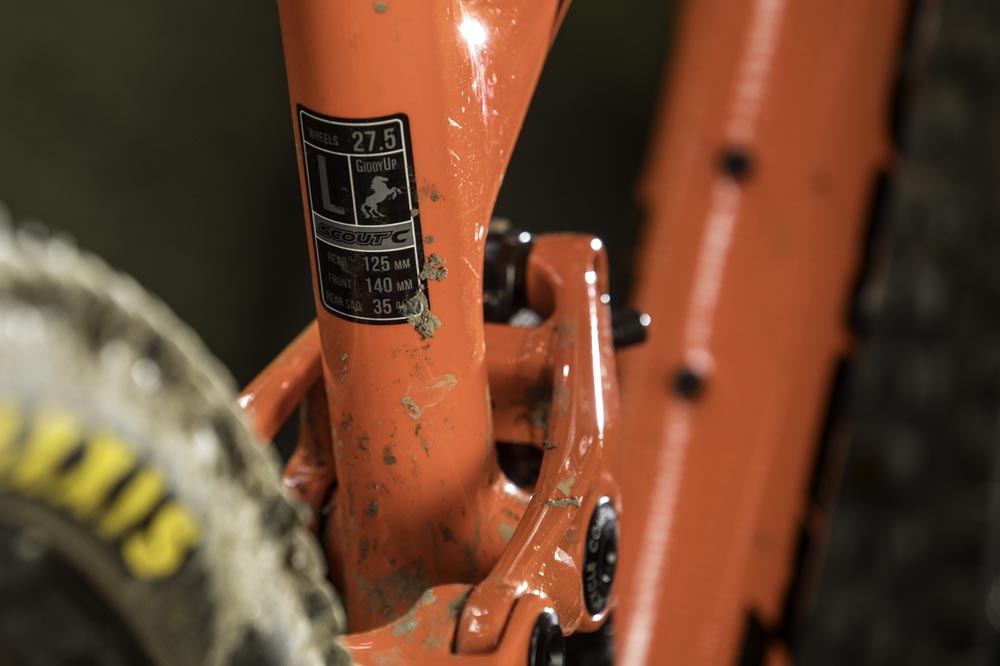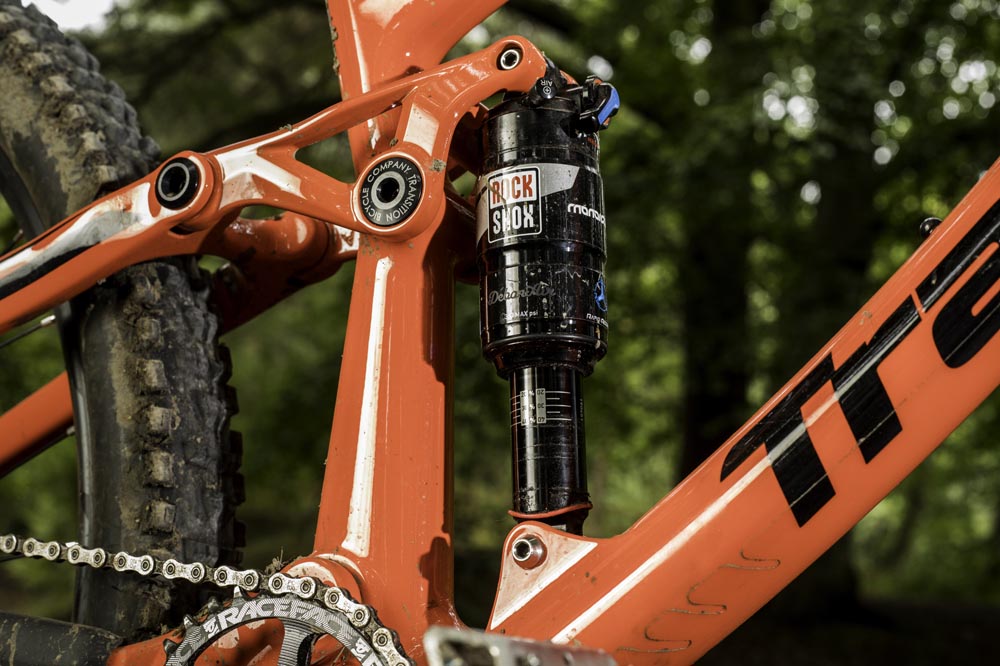Great shape and ground-tracking suspension
Transition Scout Carbon 3 review
The Transition Scout Carbon 3 has a great shape and ground-tracking suspension. But for that cash, some equipment isn’t at the level we’d expect.
Transition is the epitome of a hip, rider-owned, bike company. It’s well regarded for the kind of on-trend design evident in the Scout, and because Transition generally launches a bike first in aluminium, to iron out any potential design creases before switching to carbon, the process bodes well for durability and function.

It’s also one of the early American adopters of long, low and slack geometry, but the Scout is still over a degree steeper than the Evil The Calling and Pivot Mach 5.5 Pro, both of which rake the fork out further for extra stability.
With 27.5in wheels and 125mm of travel, the Scout has marginally less suspension muscle than the Evil, but combined with a 140mm RockShox Pike suspension fork, we’re confident you’d be hard pushed to feel the subtle difference in the numbers out on the trail.
With a low-slung profile and ample standover clearance, the smooth orange carbon frame has ported, internal cable routing and looks slick. It uses a traditional threaded BB but gets the older 142x12mm rear hub spacing, not the latest Boost standard. It’s the same deal with the 100x15mm Pike fork up front.

GiddyUp suspension irons out rough terrain at a canter
Suspension
Transition switched from a single pivot layout to a Horst link suspension design in 2015 and it hasn’t looked back. Dubbed GiddyUp, the reason for the transformation was to ‘deliver more climbing and braking traction, while retaining a neutral ride feel’.
The RockShox Monarch shock on the Scout uses a larger negative volume Debonair air spring to help initiate shock movement, improving traction and comfort. It’s the older style, non-metric shock, but it is still super smooth and the rear end feels very plush. Unfortunately that means the Scout’s 125mm suspension bobs a lot under power, to the point that on longer climbs we were constantly reaching for the 3-position compression lever to calm this pony down.

Larger negative air spring improves comfort and traction
On a £5,000 build, the basic RockShox Pike RC fork is a bit disappointment as it lacks the extra high-speed control of the more expensive RCT3 version.
Components
Some of the Scout’s parts are also a bit of a let down. SRAM 11-speed GX gears and the RaceFace Aeffect crank function fine, but they aren’t exactly boutique. Likewise, SRAM’s Guide R disc brakes easily lock the wheels, but come minus the SwingLink and pivot bearings found in pricier models, and are less smooth to the touch.
Then there’s the wheels. The AR27 rims are the skinniest here, yet also heavy. They didn’t feel that stiff either, and the rear has noticeably slower freehub engagement that the competition in this test. The wheels are also shod with cheaper, less grippy, 60a Maxxis tyres, rather than softer 3C compound that give extra security on wet roots and rocks.

Internal routing keeps an uncluttered front end
Transition Scout Carbon performance
Send the Scout on a mission down a rough bit of trail and the rear suspension is really surprising. It handles repeated hits smoothly and massages the ground for grip and comfort way more effectively that a 125mm bike really ought to, remaining active even on the anchors. Climbing traction up steep loose trails is really impressive too, with the back tyre biting so hard for drive it’s more akin to a 4×4 vehicle than a lightweight trail bike.
The low BB and short stays make the Scout easy to manual, and the carbon frame rides light and chuck-able, but it doesn’t feel anywhere near as stiff, solid or responsive as the other two bikes in this test. The significantly steeper head angle sees the front end more willing to tuck in on the steepest descents, and it makes the Scout seem smaller and less stable at speed too, even though all three bikes share similar reach numbers.
Despite the downhill composure, the Scout isn’t the best at generating extra trail speed and flow through pumping or pedalling. We tried more air than the recommended 35% sag to tighten up the rear suspension and inject some pace, but, pushing heels into berms or compressions, it feels more soft than springy, and energy loss is evident on sustained climbs or sprints due to excessive shock movement under pedal power.

Verdict
Transition’s Scout Carbon has a great shape and ground-tracking suspension. It costs £5,000, but for that cash, some equipment isn’t at the level we’d expect, and the bike feels a bit numb under power. It’s also less solid, planted and stable than other carbon rivals here, without being any more playful. That’s not to say the Scout can’t be a fun little trail ripper, it’s just not as tight and peppy as some short travel rigs, and has found itself up against two of the best, next-generation trail bikes we’ve ever tested. So in this company, with this spec, at this price, it’s been outclassed in most departments.















